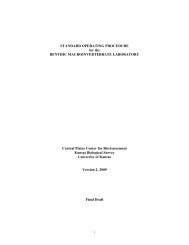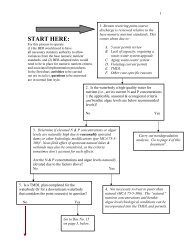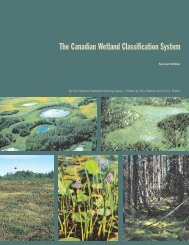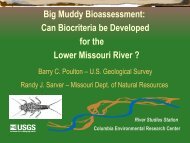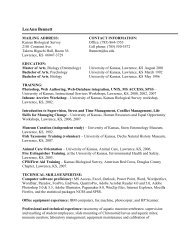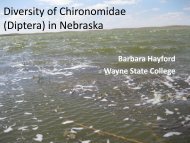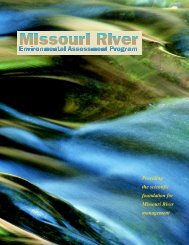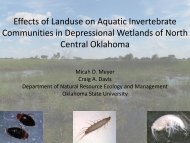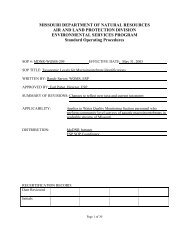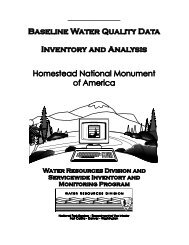Koontz, J., D.G. Huggins, C.C. Freeman, D.S. Baker - Central Plains ...
Koontz, J., D.G. Huggins, C.C. Freeman, D.S. Baker - Central Plains ...
Koontz, J., D.G. Huggins, C.C. Freeman, D.S. Baker - Central Plains ...
Create successful ePaper yourself
Turn your PDF publications into a flip-book with our unique Google optimized e-Paper software.
CDF<br />
100<br />
90<br />
80<br />
70<br />
60<br />
50<br />
40<br />
30<br />
20<br />
10<br />
0<br />
0 1000 2000 3000 4000<br />
Total Phosphorus µg/L<br />
Figure 29. Cumulative distribution frequency (CDF) of total phosphorus for reference (Phase I)<br />
and random (Phase II) populations.<br />
TN:TP ratio<br />
The log mean ratio of total nitrogen to total phosphorus was higher (p = 0.012) in reference<br />
wetlands than in the random group due to the significantly higher total nitrogen values in the<br />
reference wetlands (Figure 30a). Mean TN:TP ratios for reference and random populations were<br />
8.50 and 5.34, respectively. No significant differences were found among ecoregions, classes, or<br />
types for TN:TP. However, phosphorus had that most influence on the ratios. Robust linear<br />
regression indicated that total phosphorus explained 19% of the variation in TN:TP ratios while<br />
TN was not a significant independent variable (Figure 30c and d). Evaluating the study phases<br />
separately showed this relationship of total phosphorus to be substantially stronger within the<br />
reference population (R 2 = 0.4).<br />
45 of 84<br />
Phase One<br />
Phase Two



